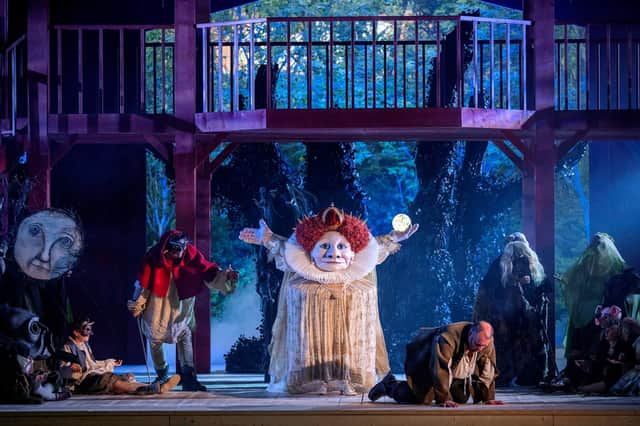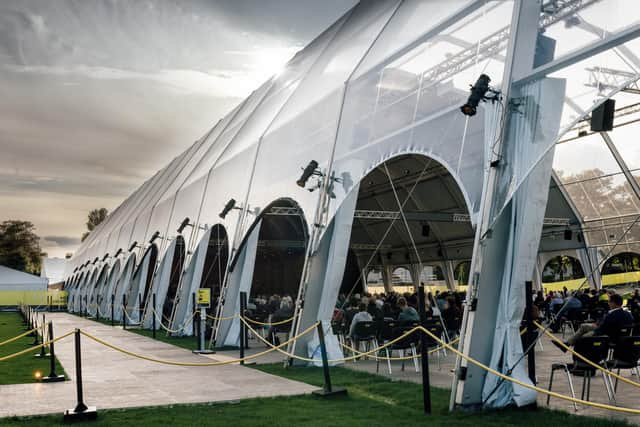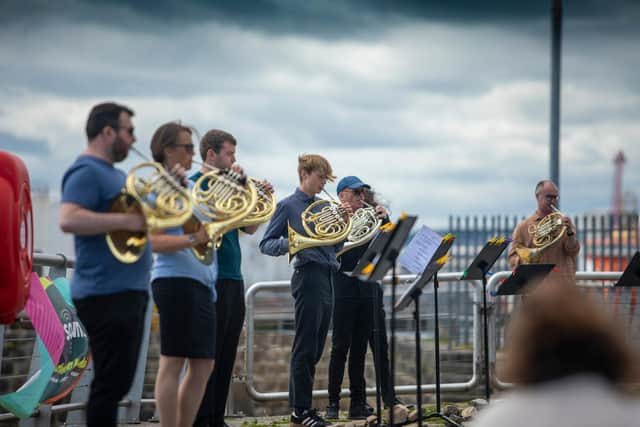Arts review of 2021: David Kettle on the year in classical music


How quickly we forget. Glance back at my round-up of the year in classical music at the end of 2020, and you’ll rediscover a world where even putting together online classical performances was a precarious business, where live events were like gold dust (though just about possible – step forward Scottish Opera’s marvellous al fresco La bohème), and where – despite hopeful signs of vaccines – we were still struggling with countless pandemic uncertainties.
How far we’ve come. And even if things still aren’t yet where we want them to be, 2021 has been a year of recovery for Scotland’s classical music, of cautious but significant strides forward. Furthermore, for several organisations it’s been a time of embracing streaming, video and other internet possibilities not as emergency sidesteps, but as core elements in future work.
Advertisement
Hide AdAdvertisement
Hide AdPerhaps not surprisingly, 2021 started off almost entirely online, more comfortably so than in 2020 as ensembles grew more familiar with the medium. There were ever more impressive digital seasons from the RSNO and BBC SSO, while the SCO took the opportunity to devolve concert curating to some of its players, and to investigate some bracingly unfamiliar music. One of the orchestra’s March online concerts – sadly no longer available – collided together Purcell, Steve Reich and the driving cacophony of Workers Union by the sadly missed Louis Andriessen in a programme masterminded by principal percussionist Louise Goodwin – and it raised the roof.


The Dunedin Consort had already shown its colours with some beautifully produced music films in 2020, and took things further with a sublime, fiercely focused account of Arvo Pärt’s Passio at Easter, in collaboration with the Hebrides Ensemble, and still available on the Consort’s website. And as summer approached, Scottish Opera camped outside Glasgow production studios again for a beautifully conceived outdoor staging of Verdi’s Falstaff by Sir David McVicar.
With the arrival of summer, Scotland’s classical music took several giant leaps forward. Cautious ones, naturally. Aberdeen’s sound festival of new music was one of the first events to make a live return, and it did it in particularly powerful fashion: Pete Stollery’s spellbinding Call sent choirs of horns calling to each other across the water at the city’s Footdee waterfront, later joined by the horns of ships in the harbour and out at sea. It was a remarkable logistical achievement, and a confident example of public art that surprised and captivated passers-by on a warm June weekend, serving as a deeply moving reminder of the connections and contacts we’d all been deprived of for so long.
Orkney’s St Magnus and Fife’s East Neuk festivals both returned with modest though much-appreciated live events, and artistic director Angus Smith put together a particularly rich line-up of performers for Music at Paxton in the Borders, many of them giving their first concerts for many months – with notably powerful performances as a result.
But if there’s one event that shouted loudly and proudly about a return to live musical encounters, it was – of course – the Edinburgh International Festival, whose sense of scale and ambition offered a breathtaking response to continuing restrictions. Though rules had relaxed further by August, EIF stuck with socially distanced, outdoor music performances in three immense, specially constructed pavilions (unkindly dubbed polytunnels – though you could see the resemblance) across the city. Edinburgh’s summer weather wasn’t always kind, but the structures nonetheless proved remarkably proficient at hosting both chamber and orchestral concerts, with a gently amplified sound projected subtly from speakers throughout the pavilions’ lengths that quickly felt unobtrusive.


There was a rip-roaring Ariadne auf Naxos, effectively a fully staged production minus sets from director Louisa Muller, in which Edinburgh-born mezzo Catriona Morison as the Composer shared the limelight with Dorothea Roschmann in the title role (still available to watch on the EIF website). The Dunedin Consort brought more visionary opera – Errollyn Wallen’s Dido’s Ghost reconfigured Purcell’s Dido and Aeneas to revelatory effect – and Barrie Kosky and Katharine Mehrling proved that a chilly, late-night, open-air Old College Quad could still conjure a magically intimate atmosphere for a Kurt Weill cabaret. It was almost business as usual in the EIF’s rich, varied classical programme, with a new, fresh sense of informality and spontaneity that future events could do worse than continuing.
And, picking up on the online films it produced in 2020, the EIF also captured several of its 2021 concerts on video, many of them available on the Festival’s website well into next year. The BBC SSO, RSNO and SCO, too, all made online offerings integral companions to their live concerts announced for the autumn. Boldest of the three is the RSNO, which has been livestreaming and recording its entire autumn season (with concerts still available until the end of January), and is doing the same for three of its concerts in the spring. Will this new online emphasis be to the detriment of live concerts? Judging by the RSNO’s exceptional live performances since October, that shouldn’t be a worry. But since March 2020, the online genie has been out of the bottle, and music groups would be short-sighted not to embrace the possibilities of wider, international audiences, and more flexible viewing.
Advertisement
Hide AdAdvertisement
Hide AdBut how far we still have to go. It’s been a year of careful steps, of crucial milestones, and of learning the lessons of lockdown. At the time of writing, Omicron is hinting that the pandemic is far from over. But there’s no denying that classical music in Scotland has so far weathered the Covid storm, and has emerged more resilient and more creative than ever.
A message from the Editor:
Thank you for reading this article. We're more reliant on your support than ever as the shift in consumer habits brought about by coronavirus impacts our advertisers.
If you haven't already, please consider supporting our trusted, fact-checked journalism by taking out a digital subscription at https://www.scotsman.com/subscriptions